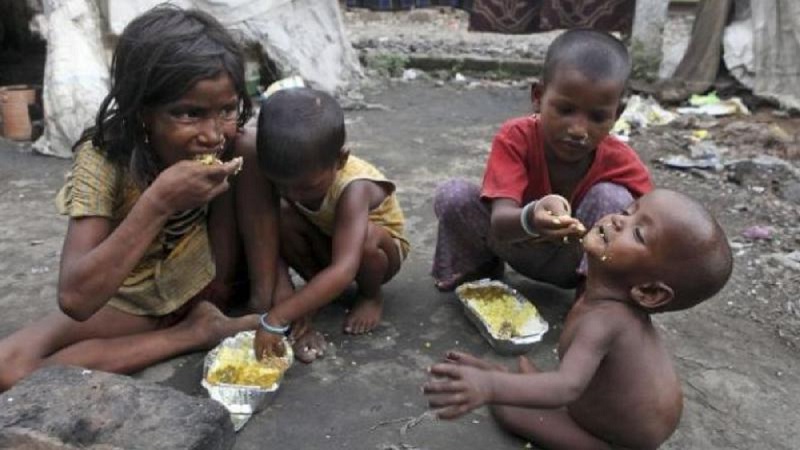
Image Courtesy: outlookindia.com
India now ranks 107 out of 121 countries on the Global Hunger Index in which the country fares worse than all countries in South Asia barring conflict ridden Afganistan.
The Global Hunger Index (GHI) is a crucial tool for comprehensively measuring and tracking hunger at global, regional, and national levels. The well recognised, GHI scores are evaluated on the basis of crucial values of four component indicators – undernourishment, child stunting, child wasting and child mortality. The GHI score is calculated on a 100-point scale reflecting the severity of hunger, where zero is the best score (no hunger) and 100 is the worst.
India’s score of 29.1 points measured places it in the ‘serious’ category.
Ironically, India leads within South Asia in not addressing hunger and malnutrition. India, shockingly, now ranks below Sri Lanka (64), Nepal (81), Bangladesh (84), and Pakistan (99). Afghanistan (109) is the only country in the South Asian region that performs worse than India on the GHI index.
China scores well and is among the countries collectively ranked between 1 and 17 having a score of less than five.
Tragically, India’s child wasting rate (low weight for height), at 19.3%, is worse than the levels recorded in 2014 (15.1%) and even 2000 (17.15%), and is the highest for any country in the world! In this category, India’s low scoring drives up the region’s average owing to India’s large population.
The prevalence of undernourishment, which is a measure of the proportion of the population facing a chronic deficiency of dietary energy intake, has also risen in the country from 14.6% in 2018-2020 to 16.3% in 2019-2021. This makes a downward slide This translates into 224.3 million people in India considered undernourished out of the total 828 million people undernourished globally. However, in the political rhetoric and sloganeering, deepening hunger and malnutrition just does not figure.
Fortunately, there is a silver lining. India has shown improvement in the other two indicators – child stunting has declined from 38.7% to 35.5% between 2014 and 2022 and child mortality has also dropped from 4.6% to 3.3% in the same comparative period. However, on the whole, India has shown a slight worsening with its GHI score increasing from 28.2 in 2014 to 29.1 in 2022. Though the GHI is an annual report, the rankings are not comparable across different years. The GHI score for 2022 can only be compared with scores for 2000, 2007 and 2014.
Globally, progress against hunger has largely stagnated in recent years. The 2022 GHI score for the world is considered “moderate”, but 18.2 in 2022 is only a slight improvement from 19.1 in 2014. This is due to overlapping crises such as conflict, climate change, the economic fallout of the COVID-19 pandemic as well as the Ukraine war, which has increased global food, fuel, and fertiliser prices and is expected to “worsen hunger in 2023 and beyond.”
In all, there are as many as 44 countries that currently have “serious” or “alarming” hunger levels and “without a major shift, neither the world as a whole nor approximately 46 countries are projected to achieve even low hunger as measured by the GHI by 2030,” notes the report.
Laura Reiner, Senior Policy Officer Global Hunger Index, in an e-mailed response to The Hindu, explains why the GHI scores can’t be compared with last year’s scores. She writes, “Each set of GHI scores uses data from a 5-year period. The 2022 GHI scores are calculated using data from 2017 through 2021; the 2014 GHI scores are calculated using data from 2012 through 2016; the 2007 GHI scores are calculated using data from 2005 through 2009, and the 2000 scores are calculated using data from 1998 through 2002. In order to show progress over time, we select past reference years such that the data used for the calculations do not come from overlapping years.”
